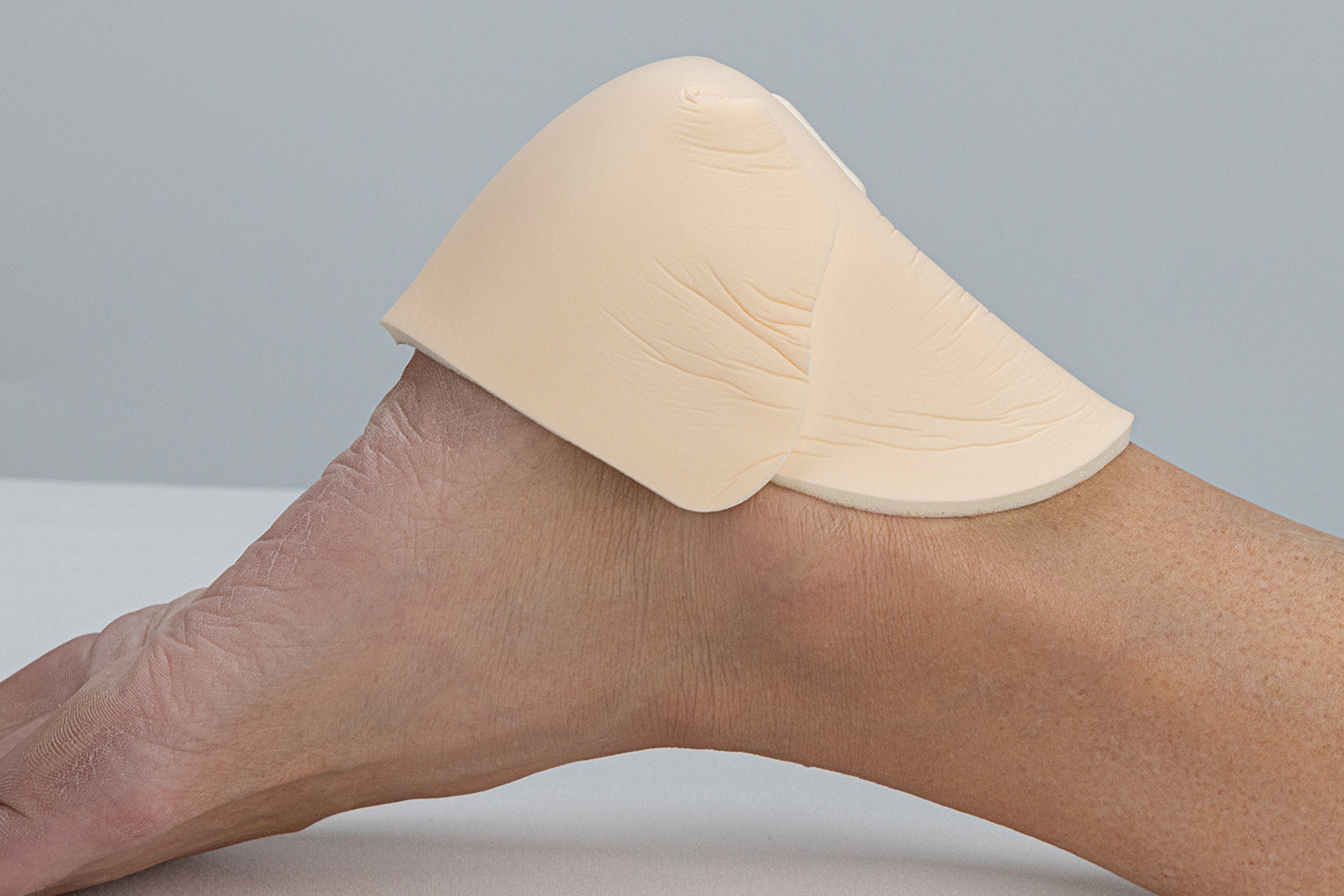Introduction: Why Heel Dressings Matter More Than You Think
If you or a loved one is dealing with a heel wound, pressure ulcer, or diabetic foot sore, you already know the frustration—slow healing, painful pressure points, and the constant worry about infection.
The wrong heel dressing can make healing even harder by slipping, failing to absorb moisture, or irritating fragile skin. But the right dressing can protect, cushion, and speed up healing effectively.
In This Article, You’ll Learn:
✔️ Why most heel dressings fail and how they slow down healing
✔️ What features actually matter when choosing a dressing
✔️ How the right heel dressing can prevent infections and speed up recovery
✔️ The #1 heel dressing that healthcare professionals trust
Let’s get into it.
Why Most Heel Dressings Fail (And How to Avoid These Mistakes)
Most people assume that any wound dressing will work for heel wounds, but that’s not the case.
1. Poor Adhesion & Slippage
- The heel is curved, and many dressings are designed for flat surfaces.
- If a dressing won’t stay in place, it won’t protect the wound.
- Movement causes friction, irritation, and exposure to bacteria.
Solution: A dressing that is contoured to fit the heel and stays securely in place.

2. Insufficient Absorption (Leading to Skin Breakdown & Infections)
- Heel wounds often produce moderate to heavy exudate (fluid drainage).
- If a dressing can’t absorb it properly, the wound stays too wet, causing maceration.
- Too much moisture = perfect environment for bacteria and infection.
Solution: A super-absorbent foam dressing that manages moisture effectively.
3. Not Enough Cushioning (Causing More Pressure Sores)
- The heel takes a lot of pressure, especially in bedridden patients.
- Without enough padding, the wound stays irritated and painful.
Solution: A dressing that cushions the wound and reduces pressure.
 4. Skin Irritation from Harsh Adhesives
4. Skin Irritation from Harsh Adhesives
- Many dressings use aggressive adhesives that can tear fragile skin.
- Older adults, diabetics, and those with sensitive skin are at higher risk.
Solution: A dressing with a gentle, skin-friendly adhesive.
5. Lack of a Moisture & Bacterial Barrier
- Unprotected wounds are exposed to bacteria, dirt, and moisture, leading to infections.
- The right dressing should create a sealed, protective environment.
Solution: A dressing that blocks bacteria but lets the wound breathe.
The Best Heel Dressing That Actually Works: Vitále® Foam Heel Dressing
At CellEra, we understand the frustrations of slow-healing wounds. That’s why we offer the Vitále® Foam Heel Dressing, a game-changer for wound care.
🔹 Why It’s Different:
✅ Perfect Heel Fit – Contoured shape stays put on the heel.
✅ Super Absorbent – Handles moderate to heavy exudate without leaking.
✅ Gentle Adhesive – Strong but non-irritating, even for delicate skin.
✅ Pressure-Relieving Cushion – Reduces pain and discomfort.
✅ Moisture & Bacterial Barrier – Protects against infections.
🔗 Shop Vitále® Foam Heel Dressing Now
How to Apply a Heel Dressing for Maximum Effectiveness
Using the right technique can significantly impact healing speed.
Step-by-Step Guide
1️⃣ Clean the wound with a wound cleanser or saline solution.
2️⃣ Pat dry the surrounding skin to ensure good adhesion.
3️⃣ Apply the Vitále® Foam Heel Dressing, making sure it fully covers the wound.
4️⃣ Smooth down the edges to ensure a secure seal.
5️⃣ Change as needed (every 3-5 days or per wound care protocol).
🔗 How to Choose the Right Dressing for Any Wound Type

Real Results: What People Are Saying
💬 "Vitále® Foam Heel Dressing has been a lifesaver for my grandmother’s pressure sores!" – Amy R.
💬 "This dressing actually stays put and absorbs like crazy. Worth every penny!" – John M., Wound Care Nurse
💬 "We use this in our clinic—it’s hands-down the best for heel wounds." – Dr. Lisa K.
FAQs: Everything You Need to Know
| Question | Answer |
|---|---|
| How often should I change a heel dressing? | Every 3-5 days or as directed by your healthcare provider. |
| Is Vitále® Foam Heel Dressing waterproof? | Yes, it repels water while maintaining moist wound healing. |
| Can I use this for diabetic foot ulcers? | Absolutely—it’s great for diabetic wound care. |
| Does this dressing cause skin irritation? | No, it has a gentle adhesive safe for sensitive skin. |
| Is it covered by insurance? | Many insurances cover it for wound care patients—check with your provider. |
| What size should I get? | The standard size fits most heel wounds—check our size guide. |
| Does this dressing reduce pain? | Yes, it cushions the wound and relieves pressure. |
| Can I buy this in bulk for a clinic? | Yes, contact us for wholesale pricing. |
| What wounds is this best for? | Heel ulcers, diabetic foot wounds, pressure sores, and surgical sites. |
| Where can I buy it? | Right here on our website! |
Final Thoughts: Don’t Settle for a Heel Dressing That Doesn’t Work
If you’re serious about healing your heel wound quickly and effectively, the Vitále® Foam Heel Dressing is the best choice.
🚀 What You Get with Vitále® Foam Heel Dressing:
✔ Faster Healing with optimal moisture balance
✔ Less Pain & Pressure thanks to superior cushioning
✔ Zero Hassle with a dressing that actually stays put
🔗 Get Vitále® Foam Heel Dressing Now → Click Here
Disclaimer
This webpage is designed for general information only. The information presented at this site should not be construed to be formal medical advice nor some medical procedures. Results will vary.





Share:
The Wound Dressing Doctors Recommend for Diabetic Ulcers
The Hidden Dangers of Using the WRONG Dressing on Burns